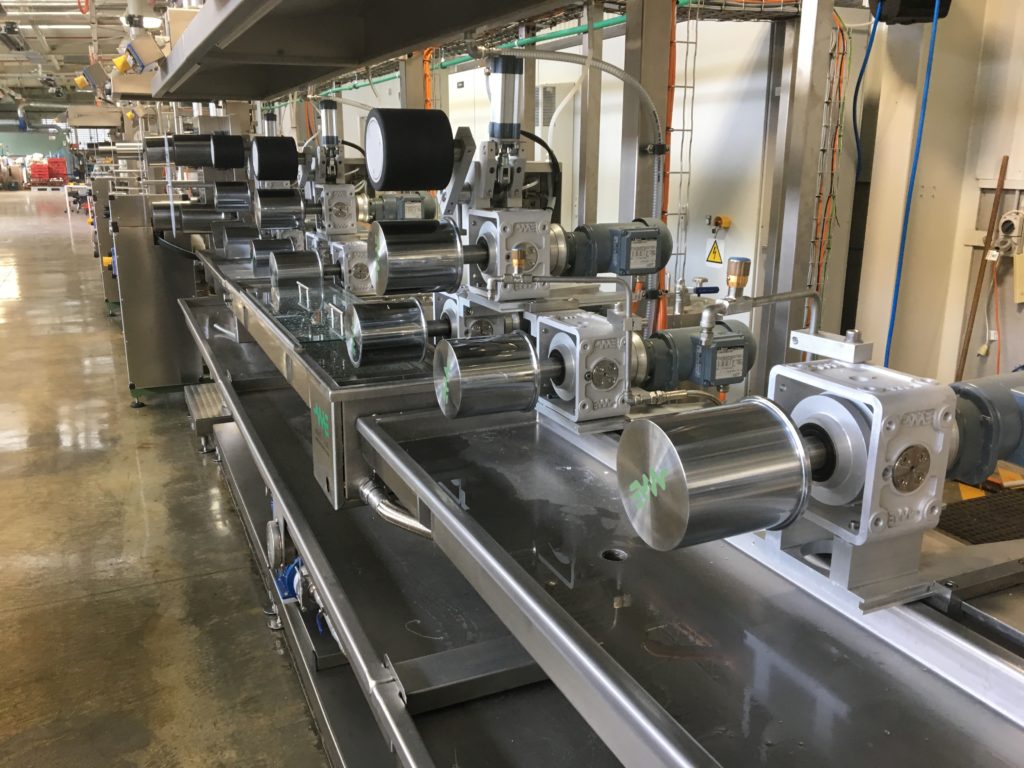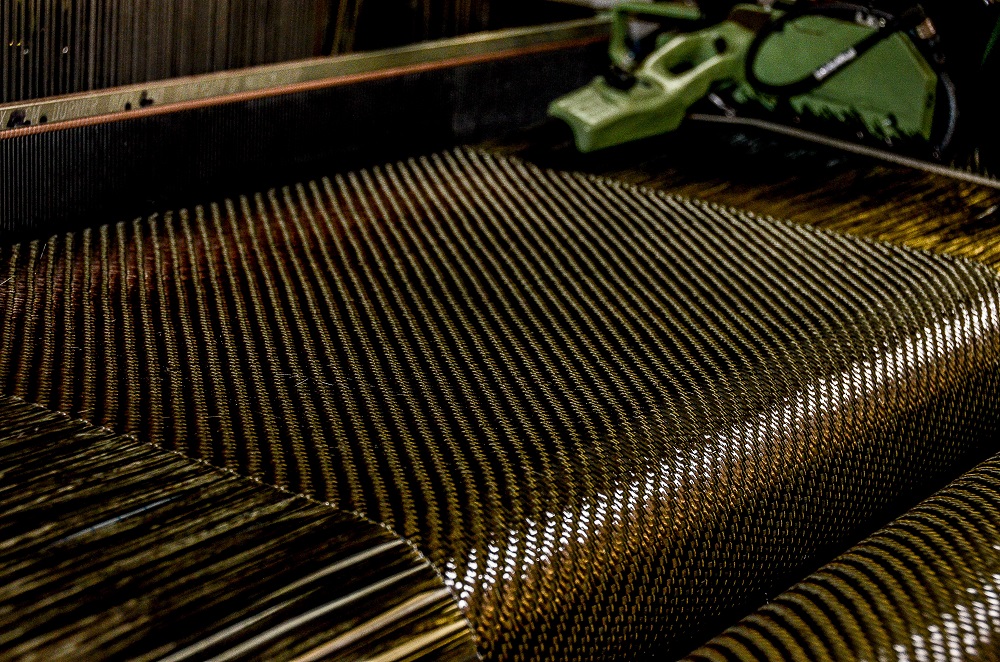
Carbon fibre machine CSIRO
Slightly more elaborate than a pasta maker: this machine helps us to create a new carbon fibre mix.
If you enjoy watching motor racing, you’ve no doubt heard the commentators talk a lot about carbon fibre. And if racing doesn’t tickle your fancy, you’ve most likely flown on a plane or driven in a car with carbon fibre components – in fact, carbon fibre is used in civil engineering, the military, cars and aerospace just to name a few areas. This material of the future combines high rigidity, tensile strength and chemical resistance with low weight. It’s far stronger than steel at just a fraction of steel’s weight.
But did you know that the recipe needed to make the precursor (the material you need to make before you can start manufacturing carbon fibre) is a closely guarded secret? Only a handful of companies around the world can create this precursor (polymer goo) from scratch.
Our researchers, together with researchers from Deakin University, are now members of this elite club of secret recipe makers. They worked out a way to reverse engineer the material and cracked the secret code to make a new carbon fibre mix – the first time this has have ever been done in Australia – and it’s likely to be the strongest, lightest, version of carbon fibre in the world!
Carbon fibre & the secret recipe
So, just how do you make carbon fibre?
Well, if you’ve ever made pasta, you’ll probably understand how to make carbon fibre!
The first step in making pasta is to make a dough out of the freshest, best ingredients. This isn’t too dissimilar to the “dough” needed for carbon fibre, that is, the precursor.
Next, to produce the carbon fibre we need wet spinning lines to mix. This is like kneading the pasta dough. And just like dough through a pasta maker, the polymer goo is stretched into thin, long strands. Polymer goes into the wet spinning line and comes out as 500 – 12,000 separate strands – all finer than human hair (think angel hair pasta instead of spaghetti).
The strands are stretched on rollers to ensure consistency, stabilised in a series of solutions, and even gets a steam bath along the way. Then the little strands of carbon fibre angel hair are wound onto a spool, which is taken back to the carboniser (kind of like an oven, but a lot more technical!). It changes the polymer’s molecular structure, getting rid of the hydrogen and realigning carbon atoms to make the finished product stronger. It’s this alignment that gives carbon fibre its amazing strength and rigidity.
Al dente!

What’s next for carbon fibre?
We’ve launched a brand new carbon fibre facility with Deakin. It was custom built in Italy by a company specialising in the carbon fibre industry, in fact they liked our design so much they built another for their own factory!
Because these amazing researchers were able to reverse engineer this secret recipe, we’re now currently testing what could be the next generation of carbon fibre. Remember how we said it was aligned molecular structure that gave carbon fibre its strength? Well, we’ve created a way to control a substance’s molecular structure. This means we have more control over our carbon fibre and can potentially make it even stronger than ever before.
Carbon fibre isn’t our only love
We’re working hard to be innovators in other manufacturing industries.


11th March 2017 at 11:22 am
This is not new technology. When I did a textile degree 40 years ago we were taught about carbon fibres. Carbon fibres are manufactured by pyrolysis of polyacrylonitrile. No doubt there are some technology and chemistry tweaks to optimise the molecular weight and alignment of the polymer precursor fibre but why all the secrecy.
11th March 2017 at 10:55 am
To add additional strength to your fibre and increase twine-ing speeds you can use your principle of forward/reverse direction of threads you used to prevent wool thread from breaking. The also offers an increased strenght to lateral stability without increasing weight or change to design parameters product used for.
Just dusting off some archives for you!
Regards Stephen Fitton.
13th March 2017 at 2:20 pm
I am assuming your comment refers to reversing the direction of wool fibres after combing. This is done to give the top a random distribution of wool fibre ends to achieve even drafting before spinning into yarn.
Carbon fibres are continuous filament fibres. The strength of these fibres depends on many factors including the molecular weight and alignment of the precursor filament and the conditions under which the precursor is pyrolysed. A precursor with higher molecular weight and better alignment will give a stronger fibre. Practically there is a limit to the MW because the precursor dope becomes too viscous to spin. Optimum results are achieved by controlling the precursor polymerisation to achieve the maximum MW with a narrow MW distribution.
10th March 2017 at 12:02 pm
Is it strong enough to build a space elevator, as per Author C Clarke’s prediction? I recall he postulated a form of diamond, which isn’t far off the mark.
11th March 2017 at 11:12 am
No
22nd February 2017 at 4:21 pm
Paul asked the big question… Is it recyclable? The sad answer seems to be that, like most high-tech materials, recycling is only possible to a degraded product. The problem is that carbon fibre is no use without the polymer matrix that holds it in shape. Smashing up the matrix to release fibres also drastically shortens and weakens the fibres. So does burning off the matix. Dissolving it requires expensive and toxic solvents with poor recovery rate.
Recycled fibres are likely to be used for fence posts, not aircraft wings, bicycles or even fishing rods.
10th March 2017 at 12:04 pm
A good question
If it is not degradable it may cause a problem s in the environment
22nd February 2017 at 12:37 am
Great! Is carbon fibre recyclable. Does this mean with the CSIROs help we could field a contender in the America’s Cup?